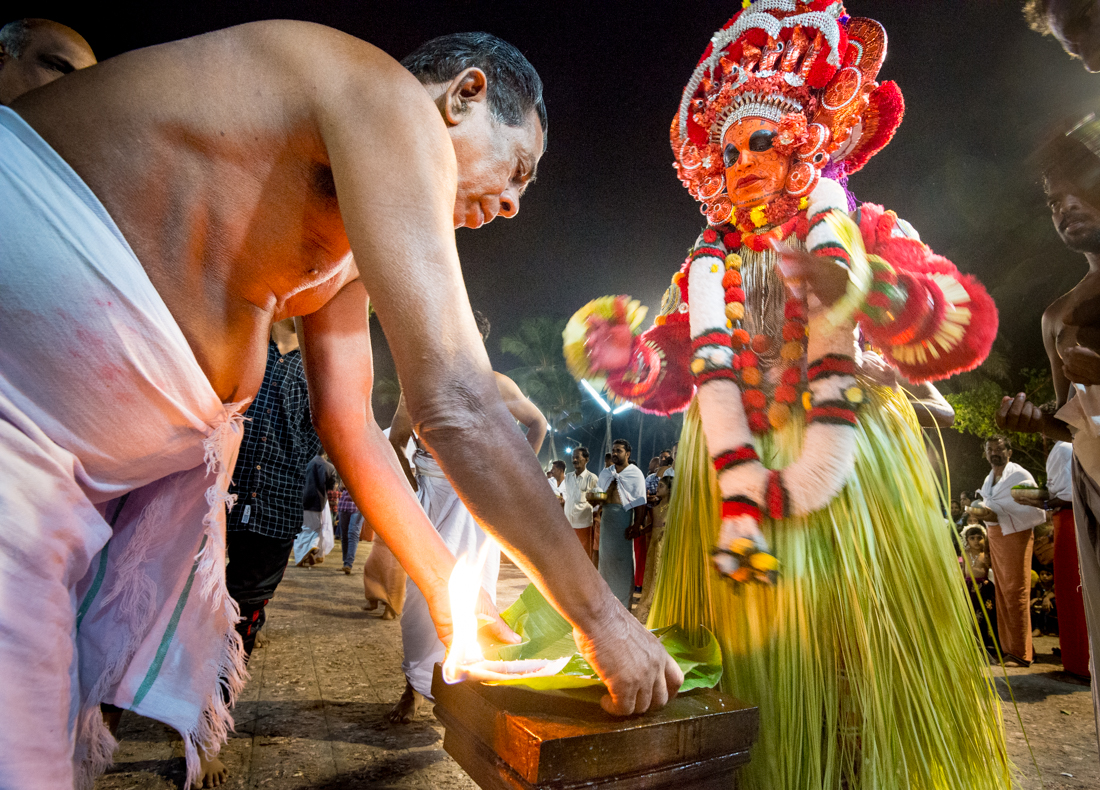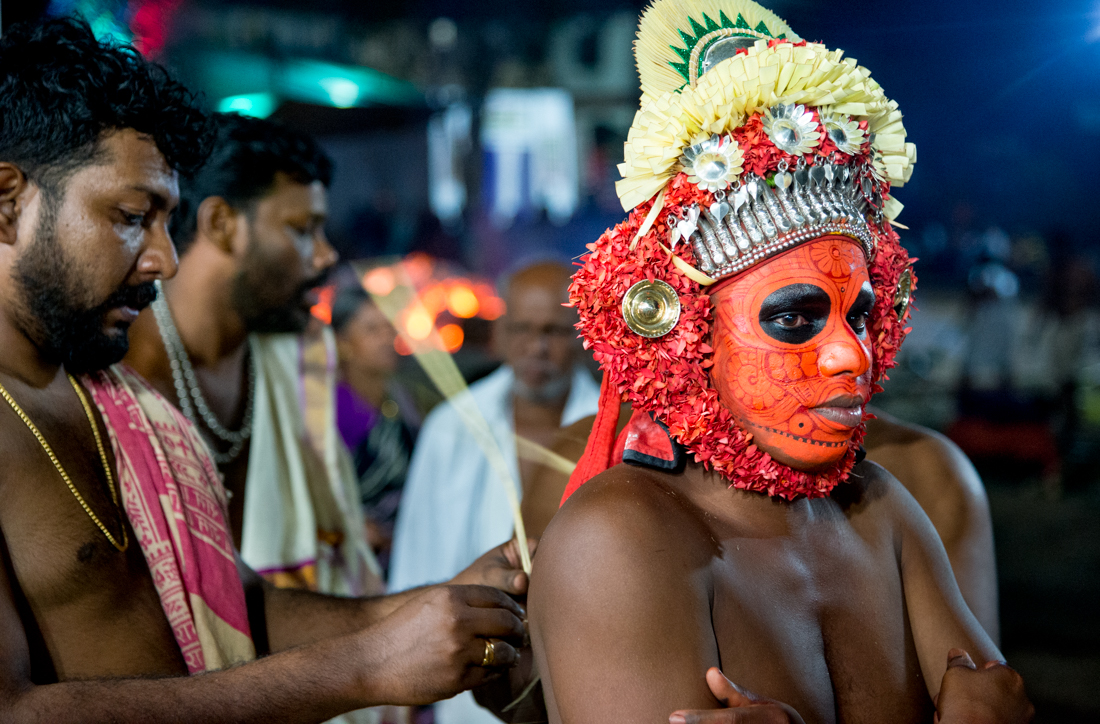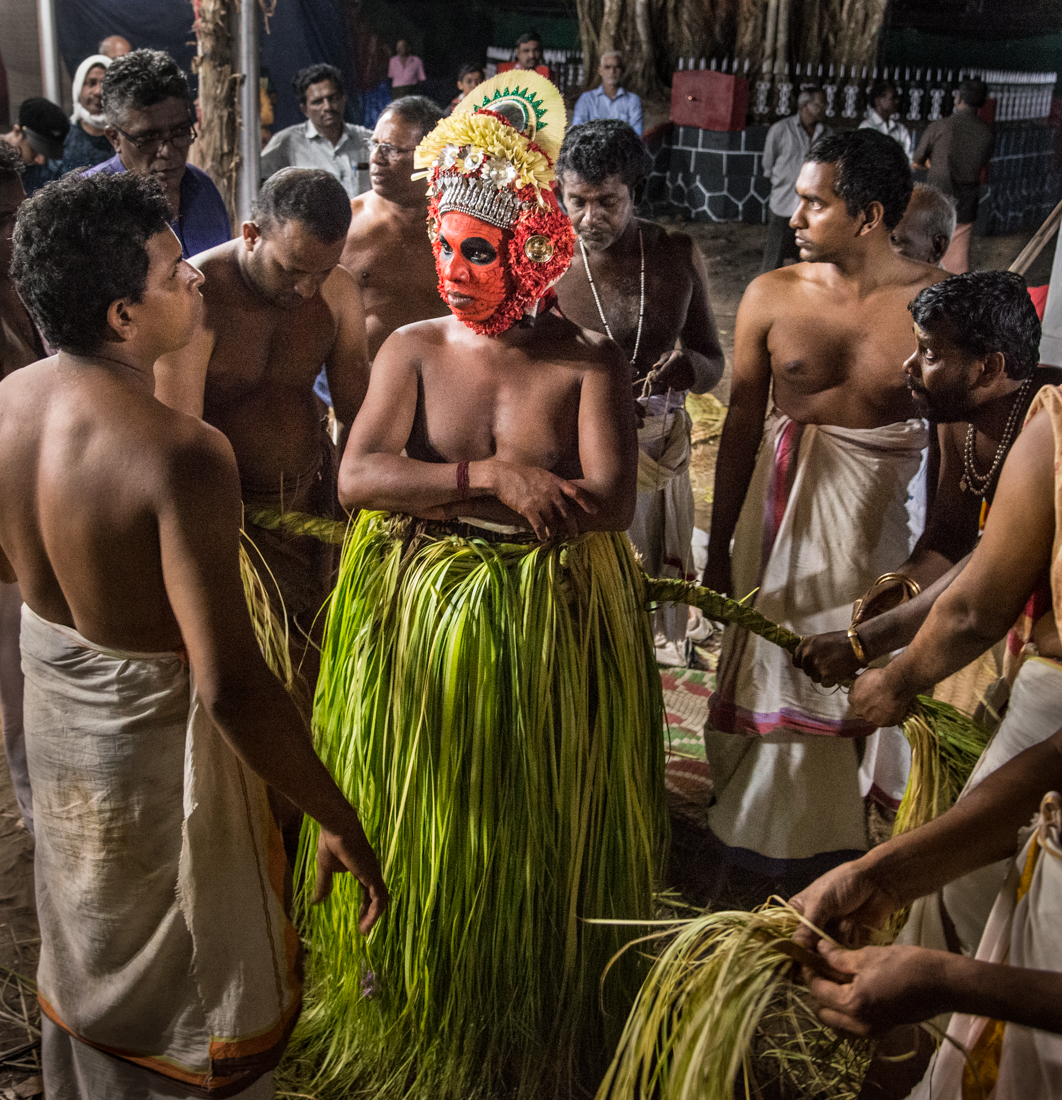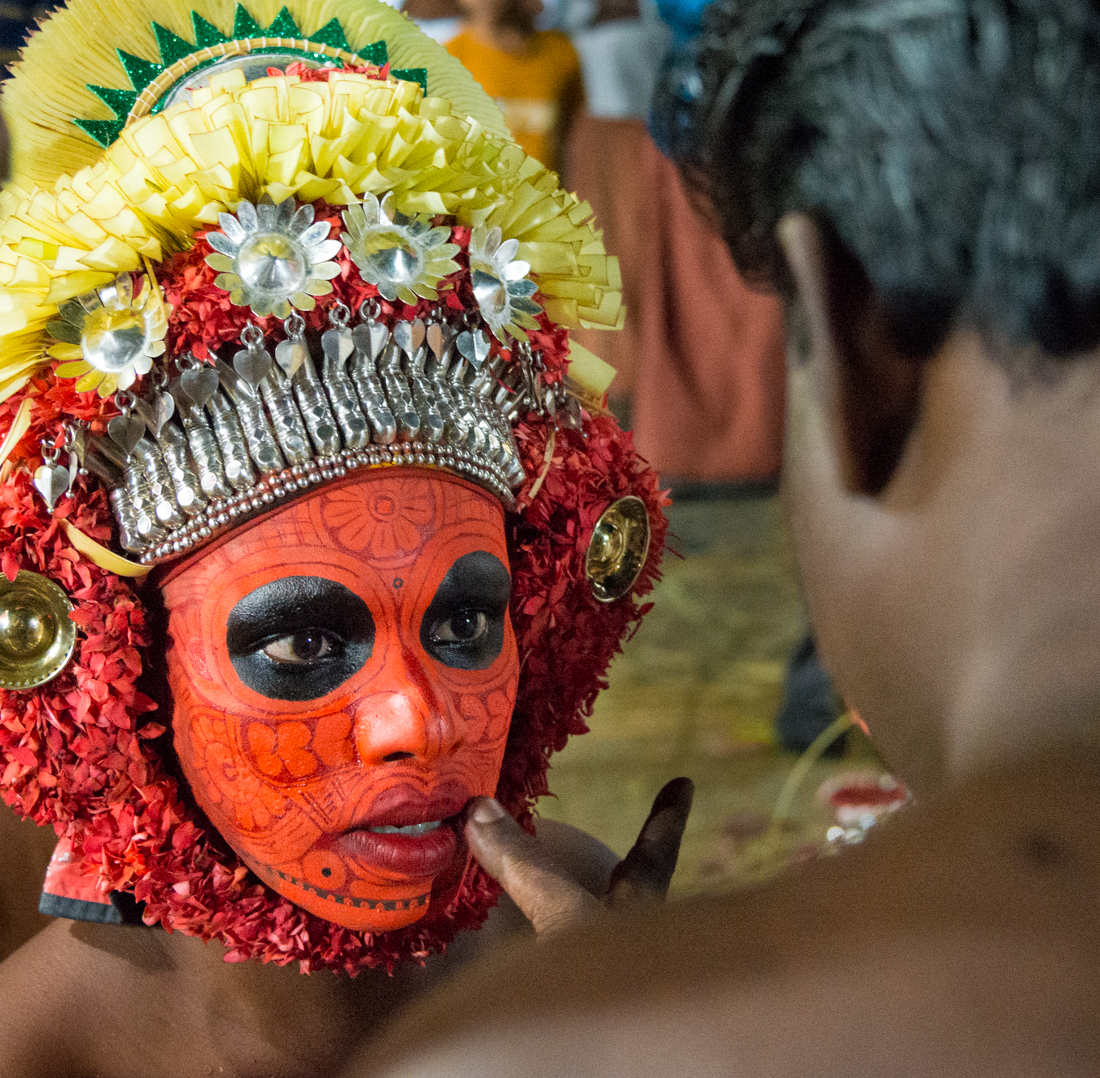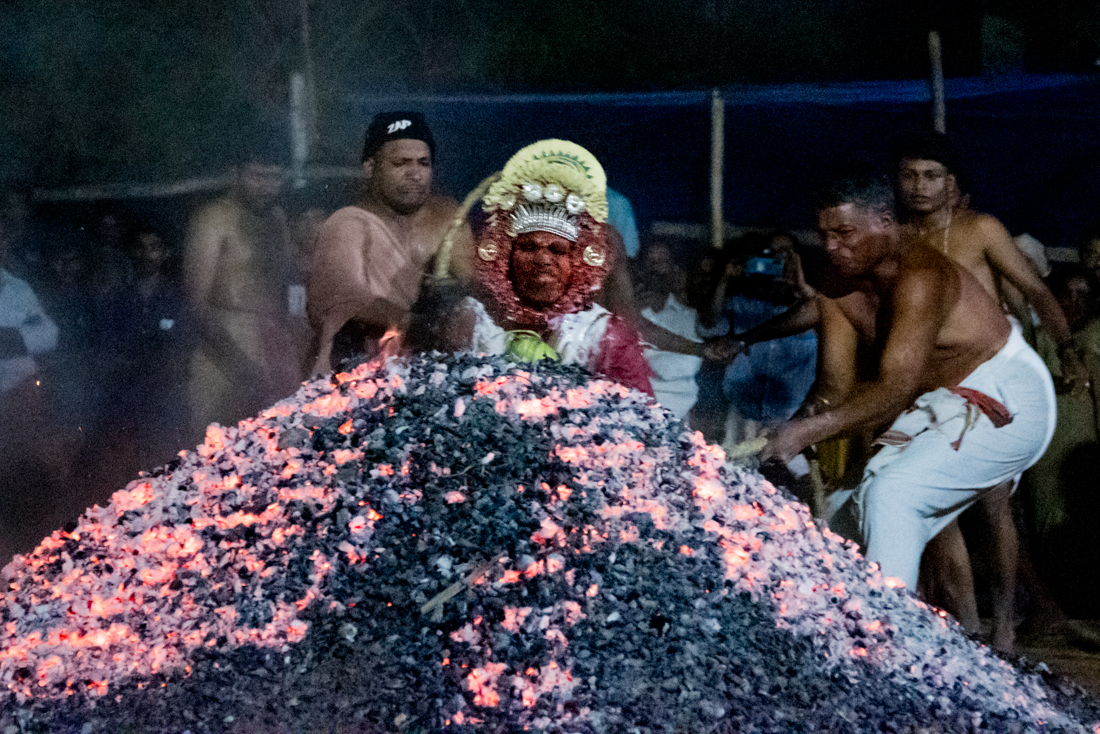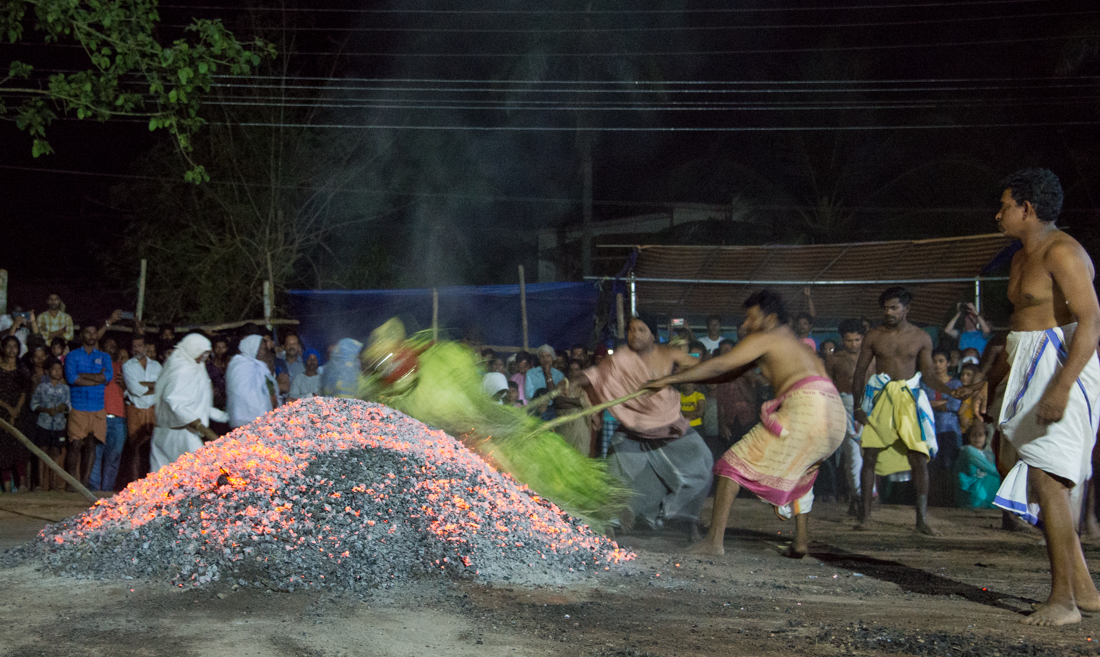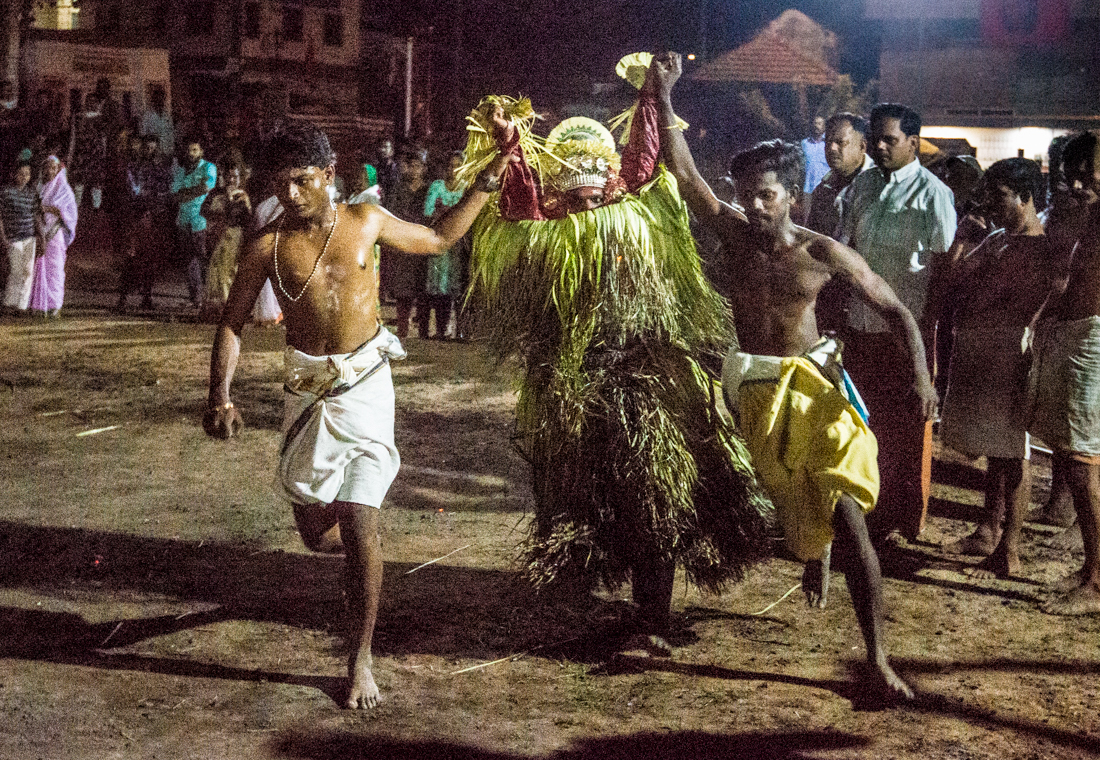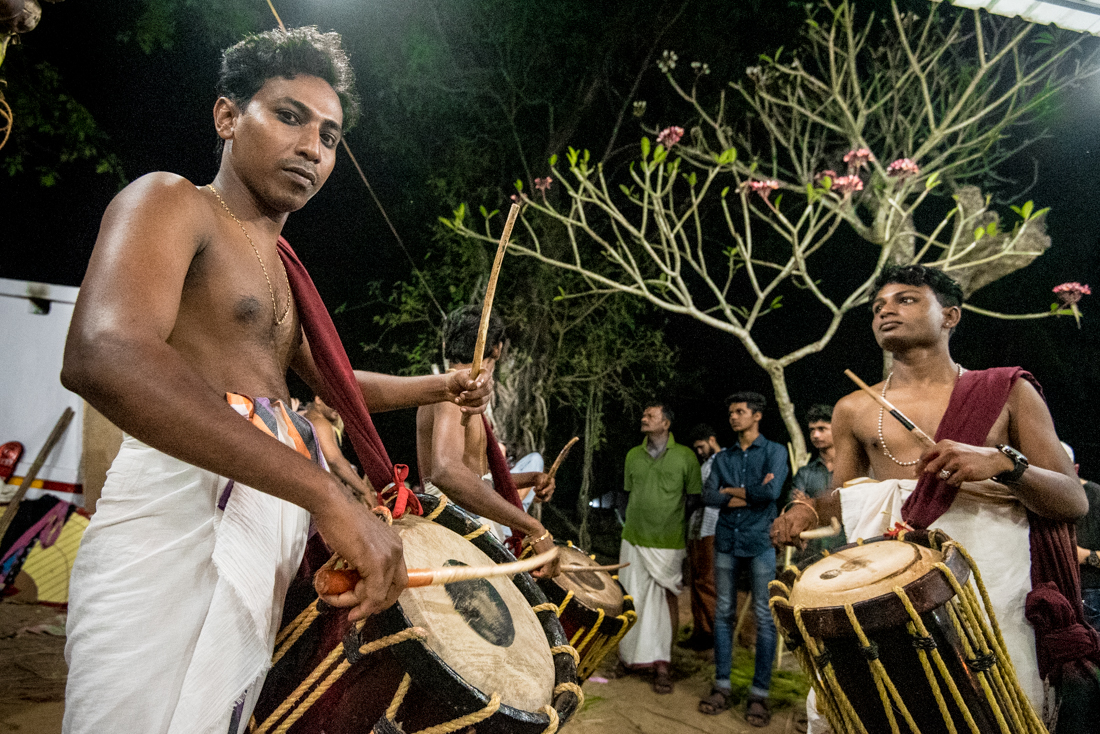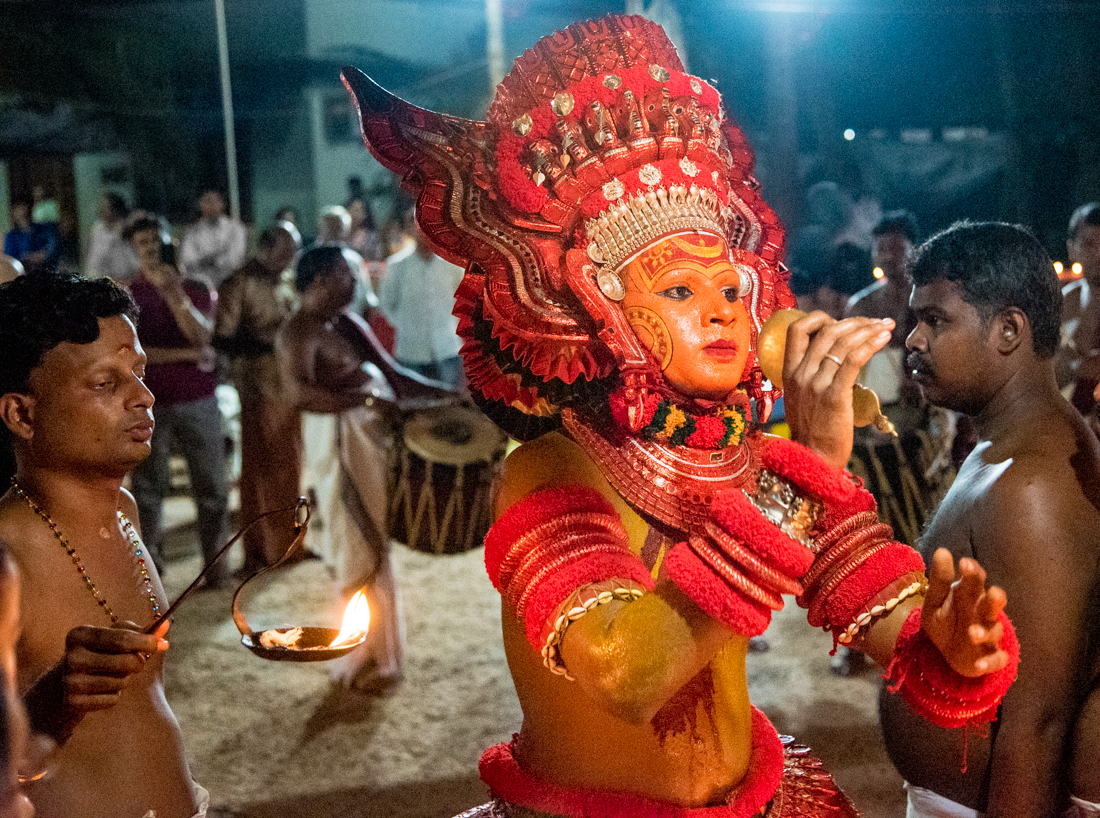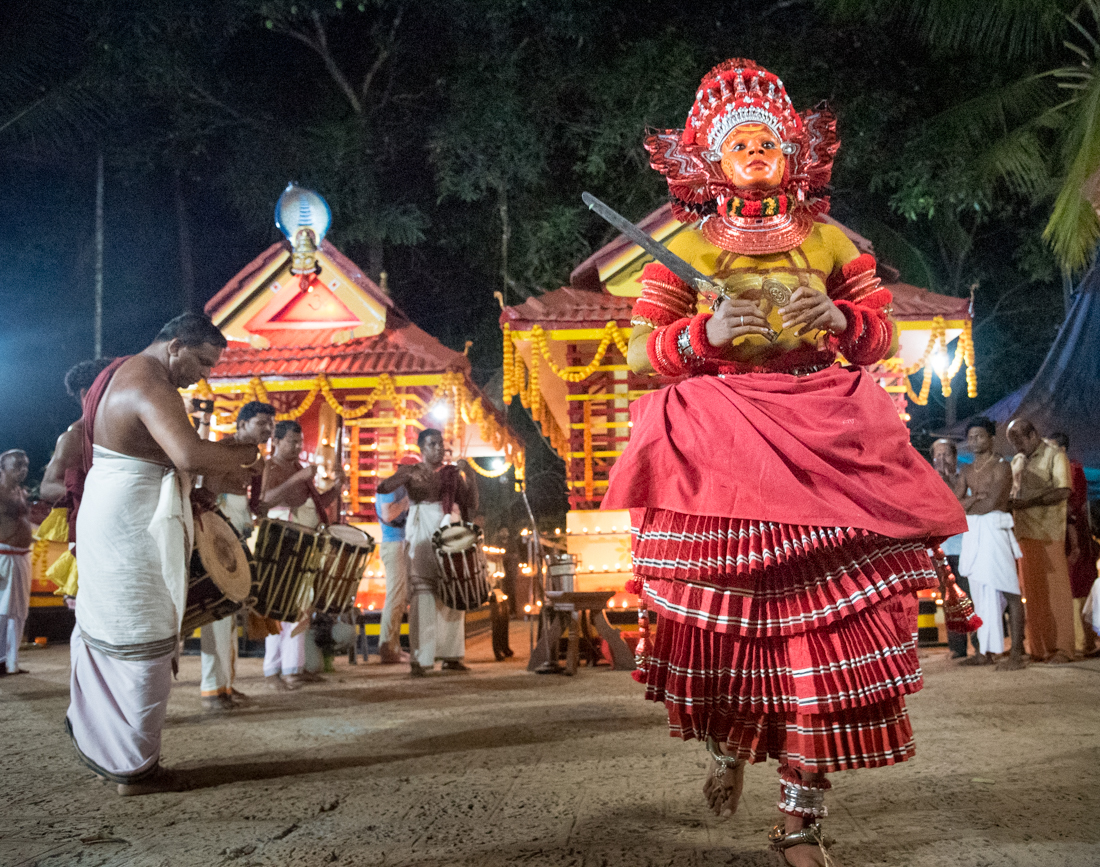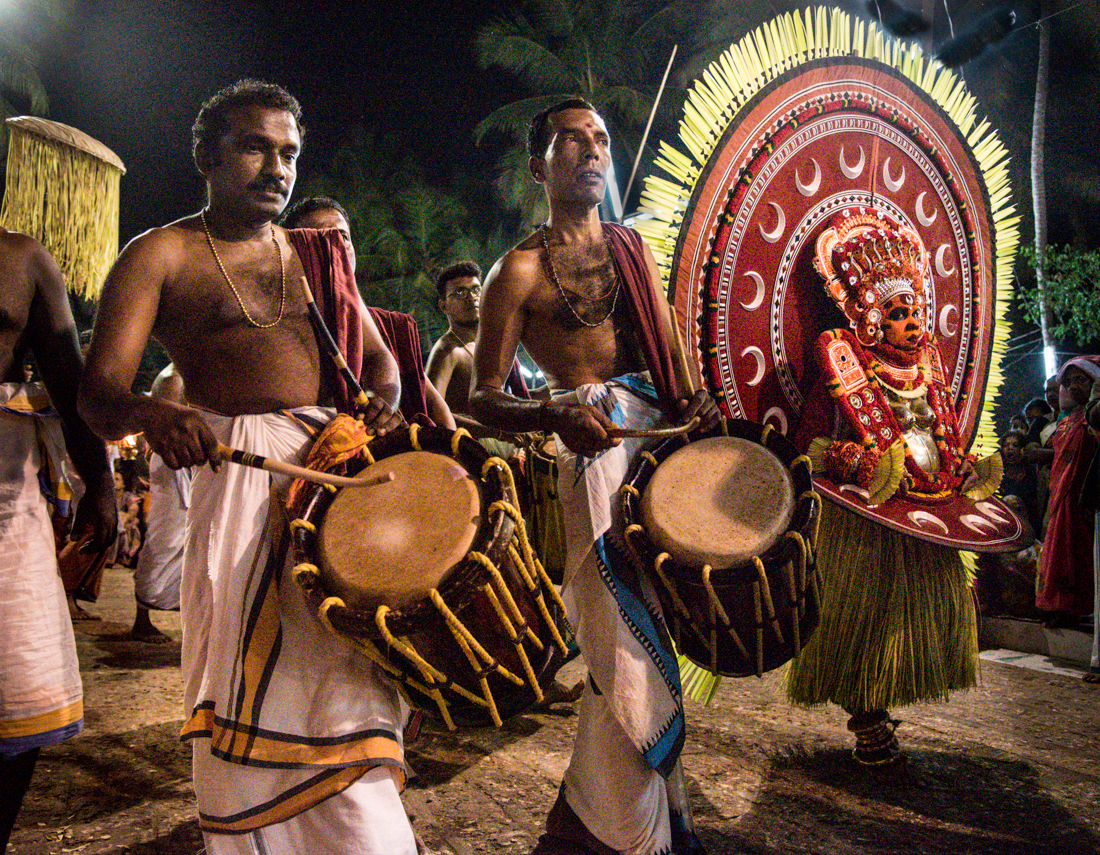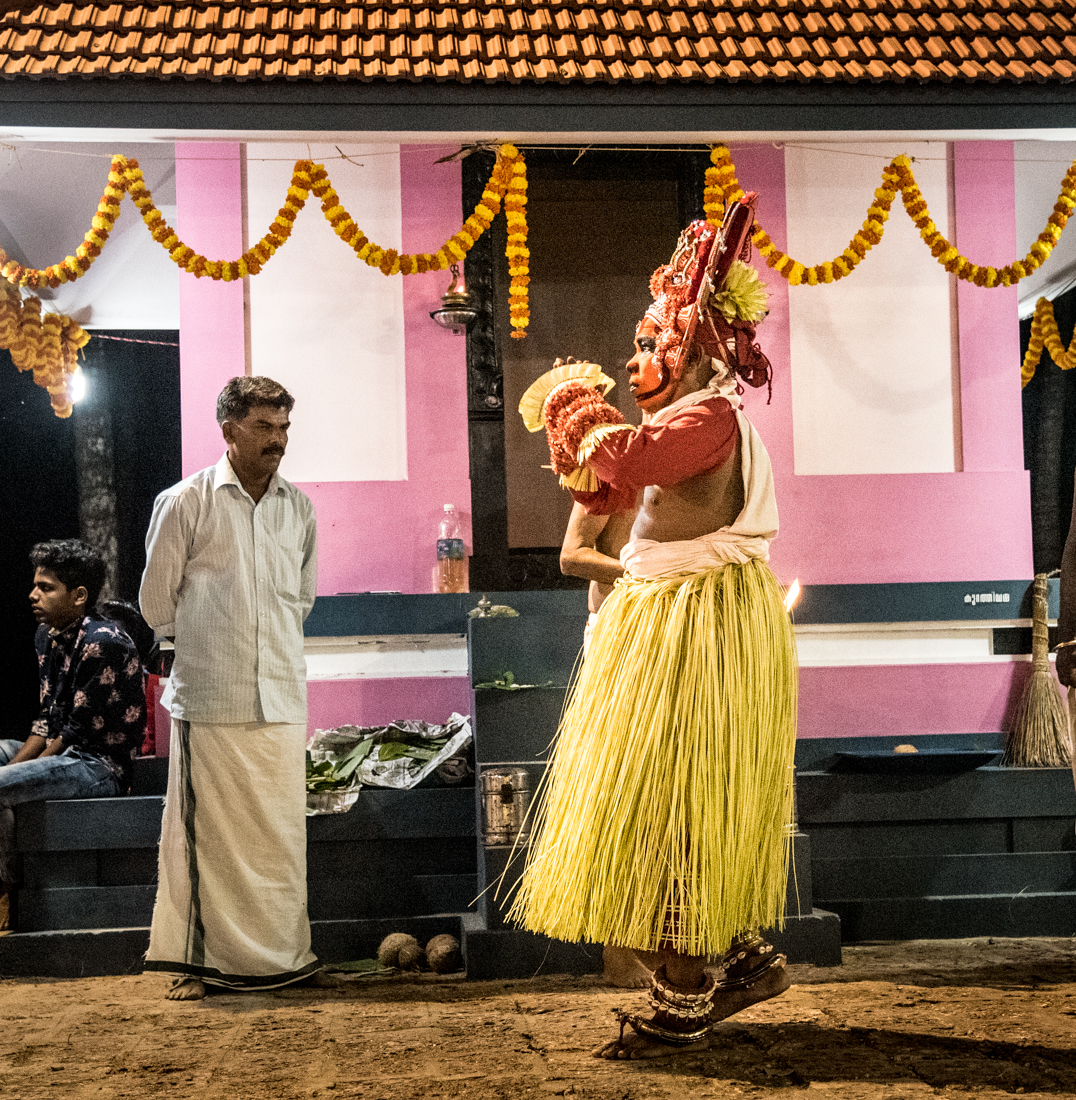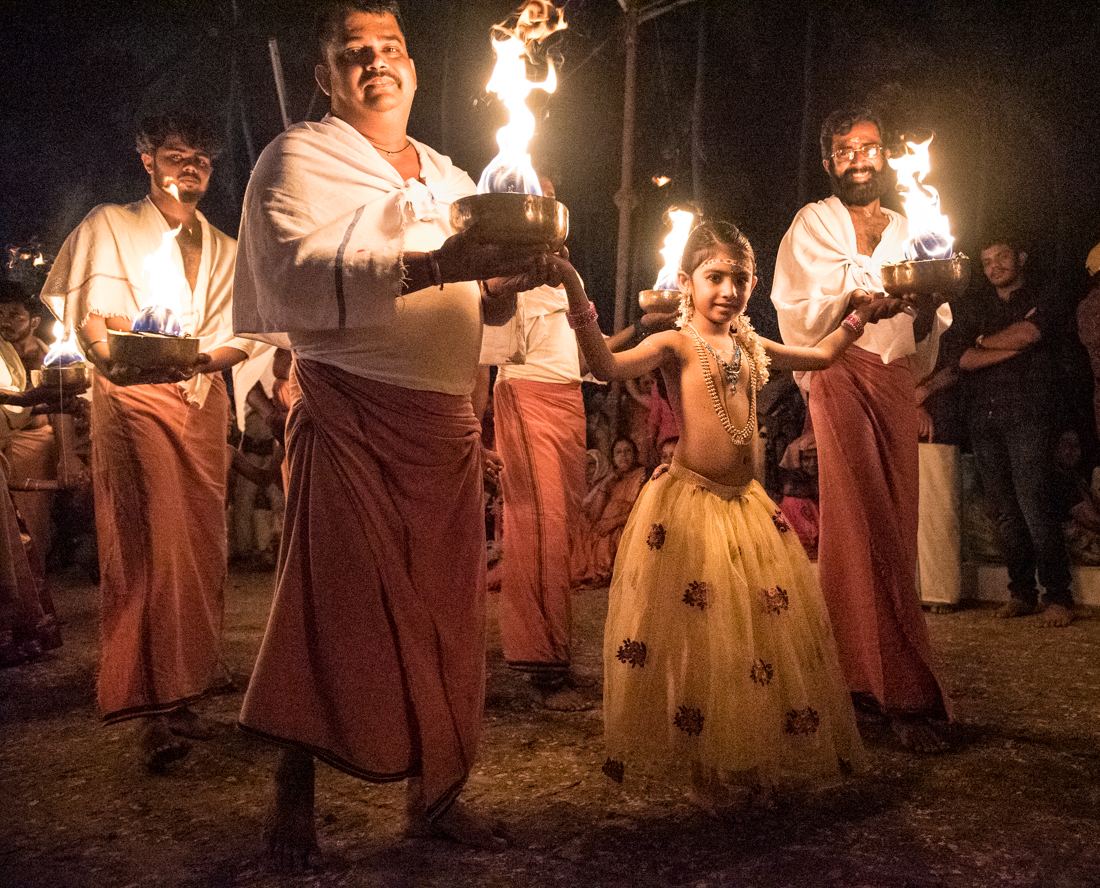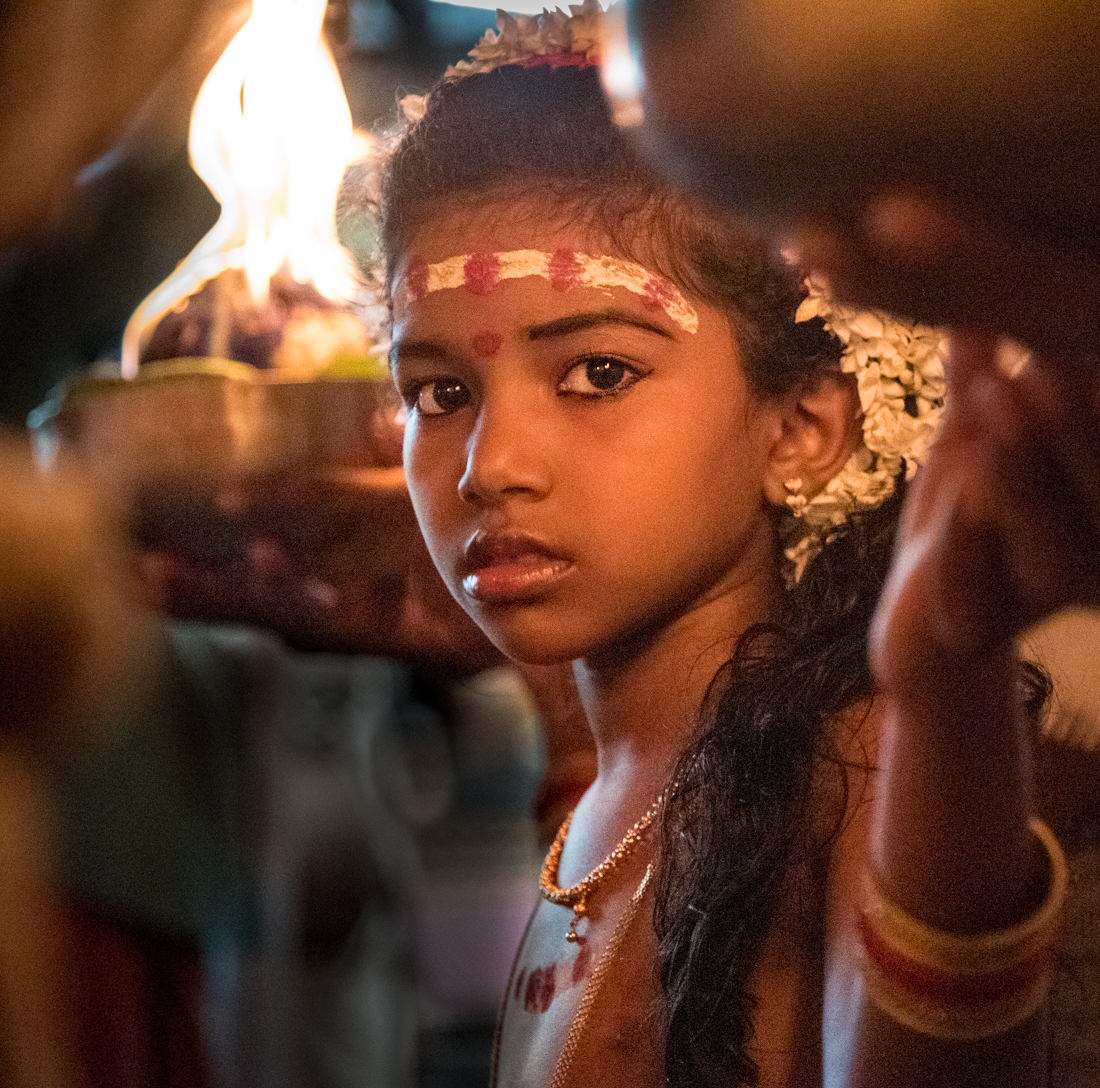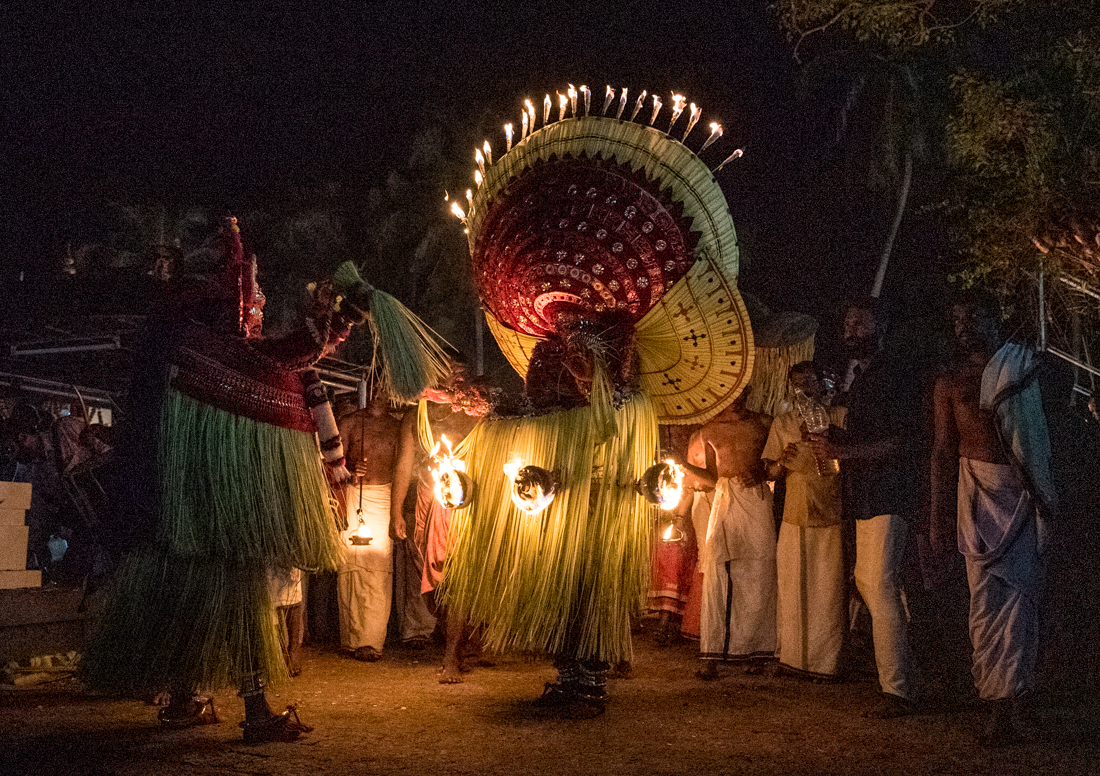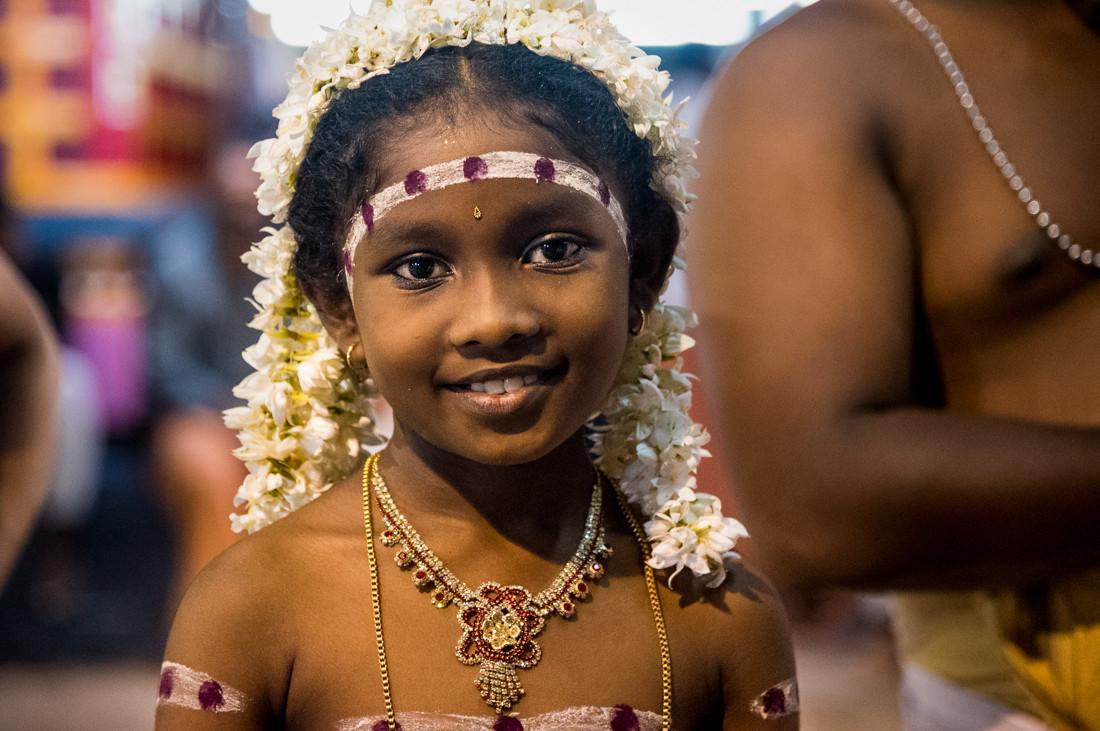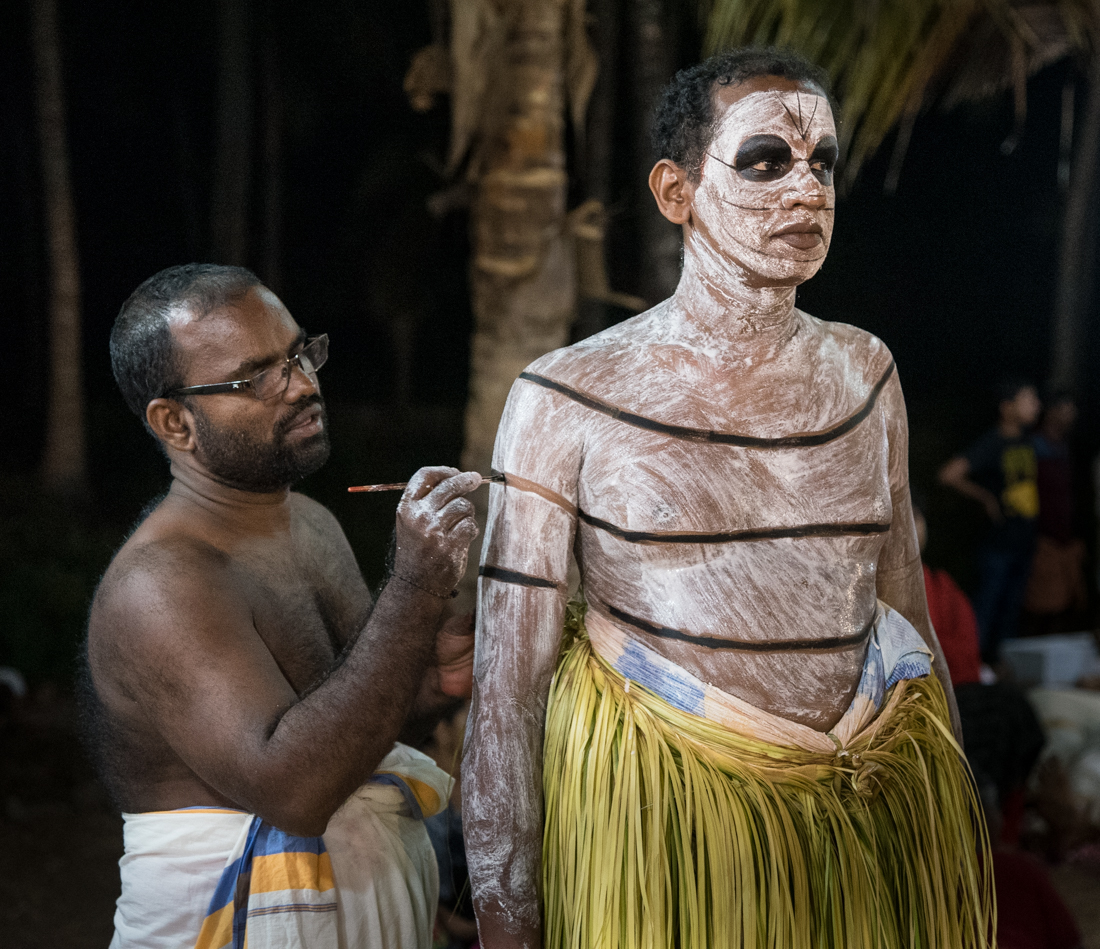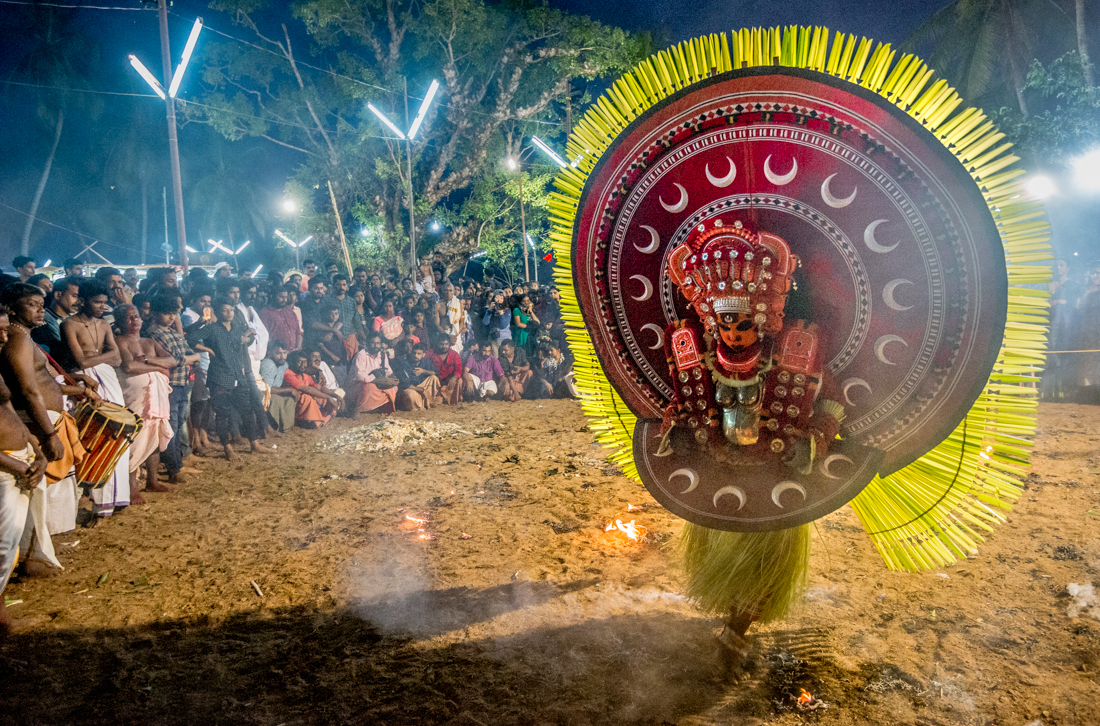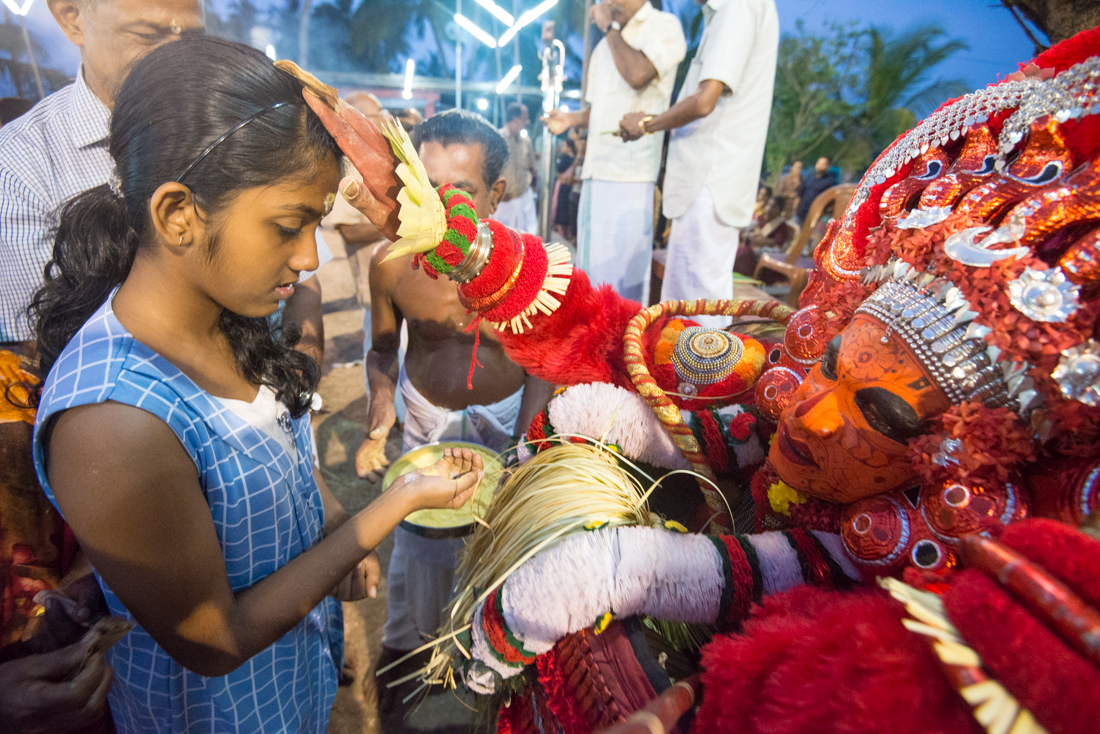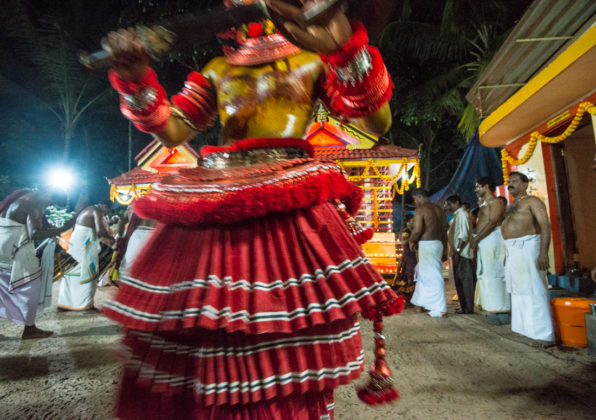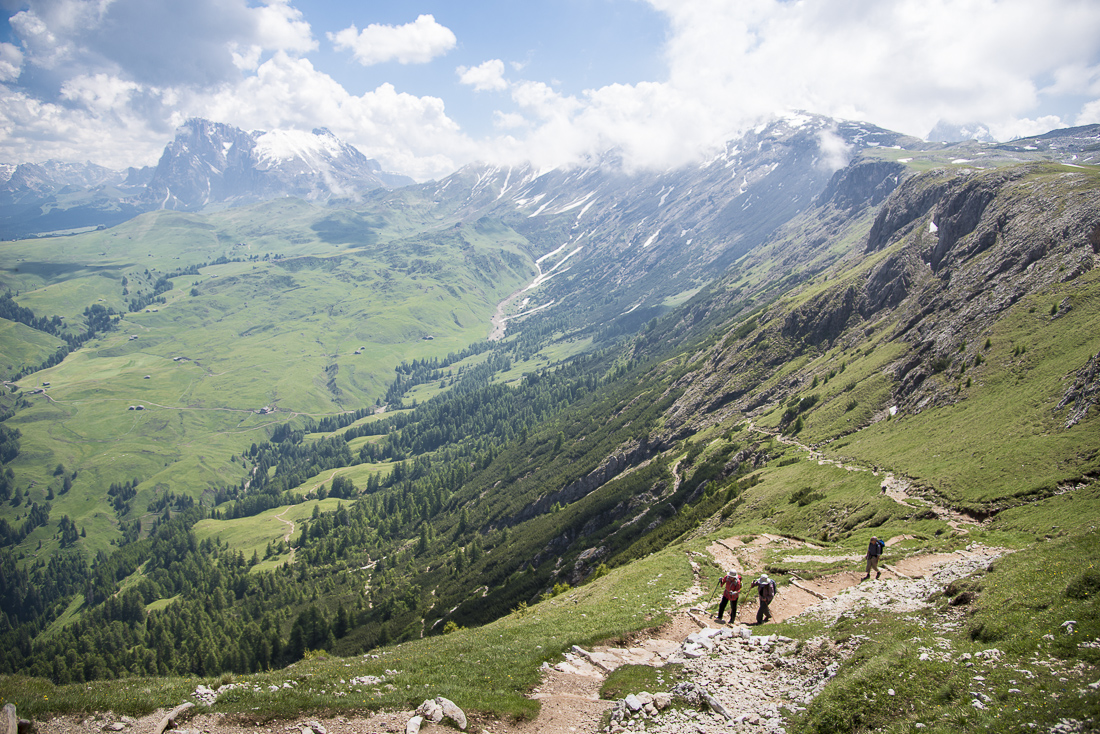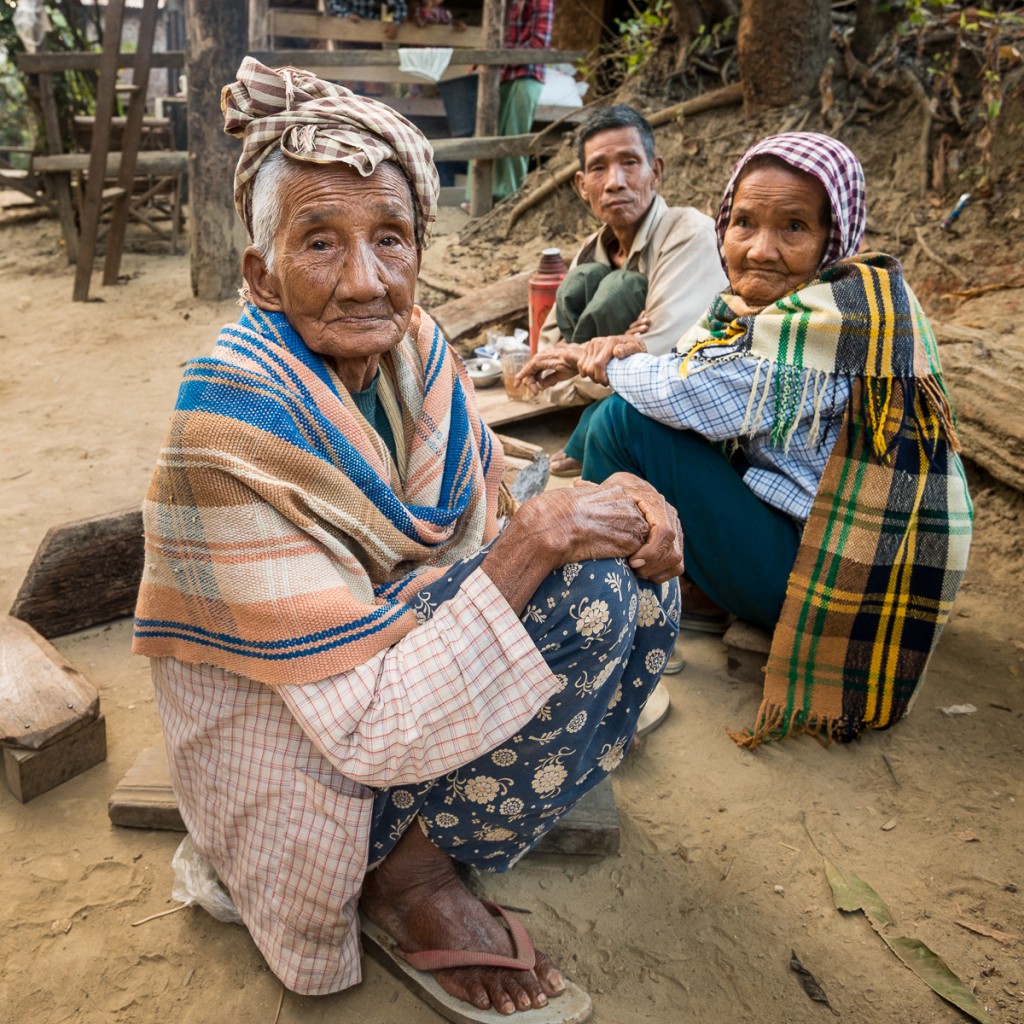The first of a series from Southern and Western India.
My first night in a Malabar Coast beachside cabin ended early — with a 2:45 a.m. alarm and a short 3:00 a.m. hike to the nearest highway to catch our van. A nearby town was having a pre-dawn “theyyam” – an event that’s both a religious ritual and a performance artform, done mostly in the Kerala state of southwest India. This theyyam celebrated Vishnumoorthy, who (as best I can understand) is something of a deified disciple of the Hindu god, Lord Vishnu.
Two things were happening when we arrived: A handful of men were stoking a big bonfire, and another group (all wearing white skirt-like “mundus“) were tending to a young man portraying Vishnumoorthy in an elaborate headdress and orange make-up. The young Vishnumoorthy was eventually covered in dozens of layers of palm leaves and rigged with twisted ropes attached at his waist. Not long after the (super-loud) drumming started, Vishnumoothy sprang into action. He gestured frantically in what seemed to be a hurried attempt to bless everyone around him. Then his posse of handlers ushered him toward the fire.
We knew enough to expect that Vishnumoorthy would be thrown (ceremoniously and hopefully safely) into the fire, so I got my camera ready for the big moment. Sure enough, his handlers flung and shoved him face-down onto the pyre, then promptly dragged him out (still face-down) by those ropes attached to his waist. (By now the bonfire was mostly a large pile of red-hot coals.) Just as I was tempted to think, “Wow, how many times in your life do you see something like that!?!”, they threw him in there again. Then again. And again. . . I later read that the ritual requires them to throw him in (and drag him out) 104 times. So that’s what they did – stopping several times in the middle to make sure he was okay and let him dance around the fire . (104 is a lot of times to be thrown face-down into a fire, fyi.)
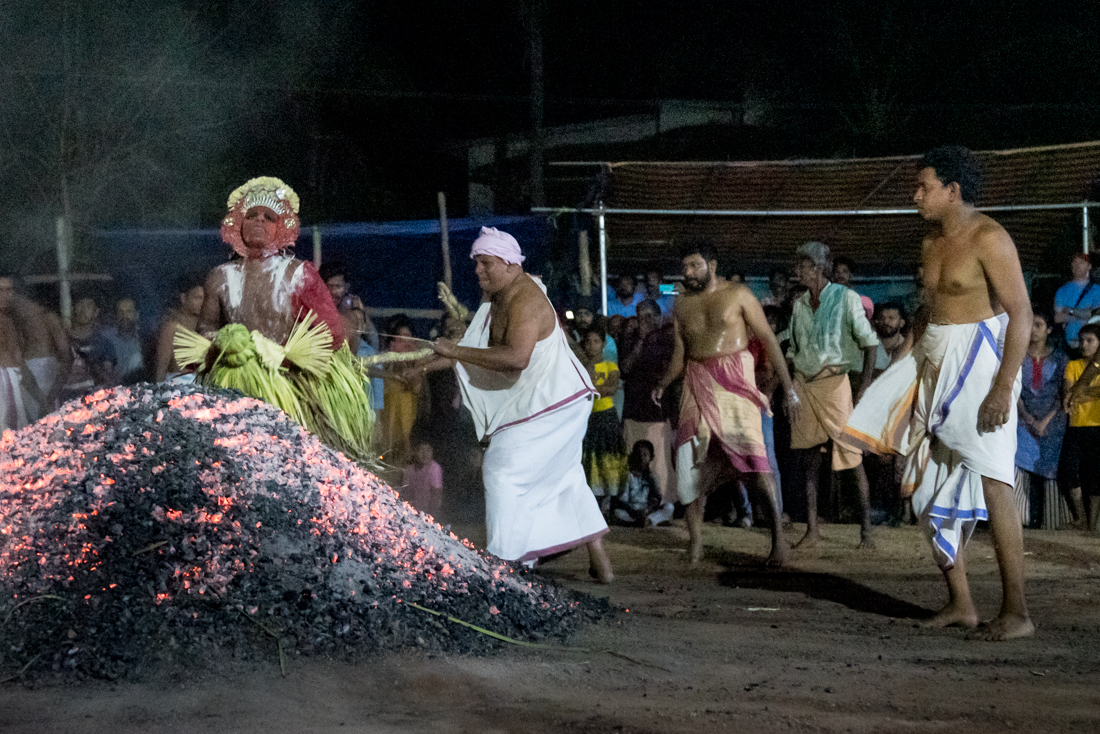
Photo quality was poor for the fast action around the fire in the darkness, but hopefully you can see how it all worked. All 100+ times.
I wound up going to three different theyyams that week – one at sunset and two before dawn. They were each at different Hindu temple sites in villages near Kannur, India. The sunset event celebrated the Hindu “patron saint” of blacksmiths (and somehow involved a snake temple but happily no actual snakes). It had only a few dozen onlookers around and loudest drumming I have ever endured. The third event was huge, with at least 1000 people up long before dawn celebrating 5 different demi-gods (including Vishnumoorthy, Gulikan, and others I couldn’t identify). Dozens of young boys and girls were dressed up and paraded around; I think the idea was that these deities were blessing the kids.
A combination of two things made my “theyyam” experiences special. First, they were 100% authentic. These were local ceremonies and our little group of photographers were the only ‘foreigners’ around. This was not in any way designed for tourists (especially that 4:30 a.m. start). At the same time, the people there couldn’t have been more welcoming and accommodating. I knew that these were religious rituals so I initially tried to be discrete, respectful, and out of the way. But the locals wouldn’t hear of it – I was consistently urged (often ushered) right to the front. Not only did they have zero objections to our intrusions, they were proud to show off their customs and culture. So as the pictures reflect,* I was right in the middle the action – except the part where they threw that guy in the fire.
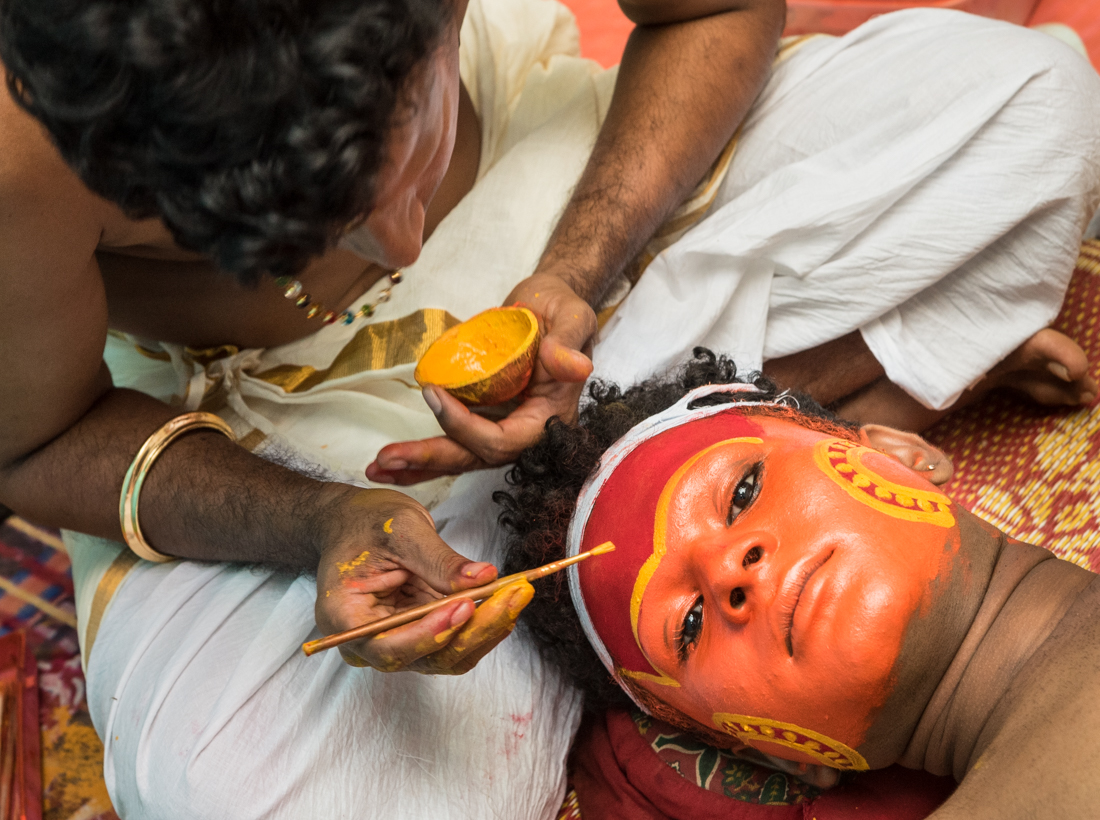
This guy ‘became’ the blacksmith deity celebrated at the sunset theyyam shown in the next two pictures.
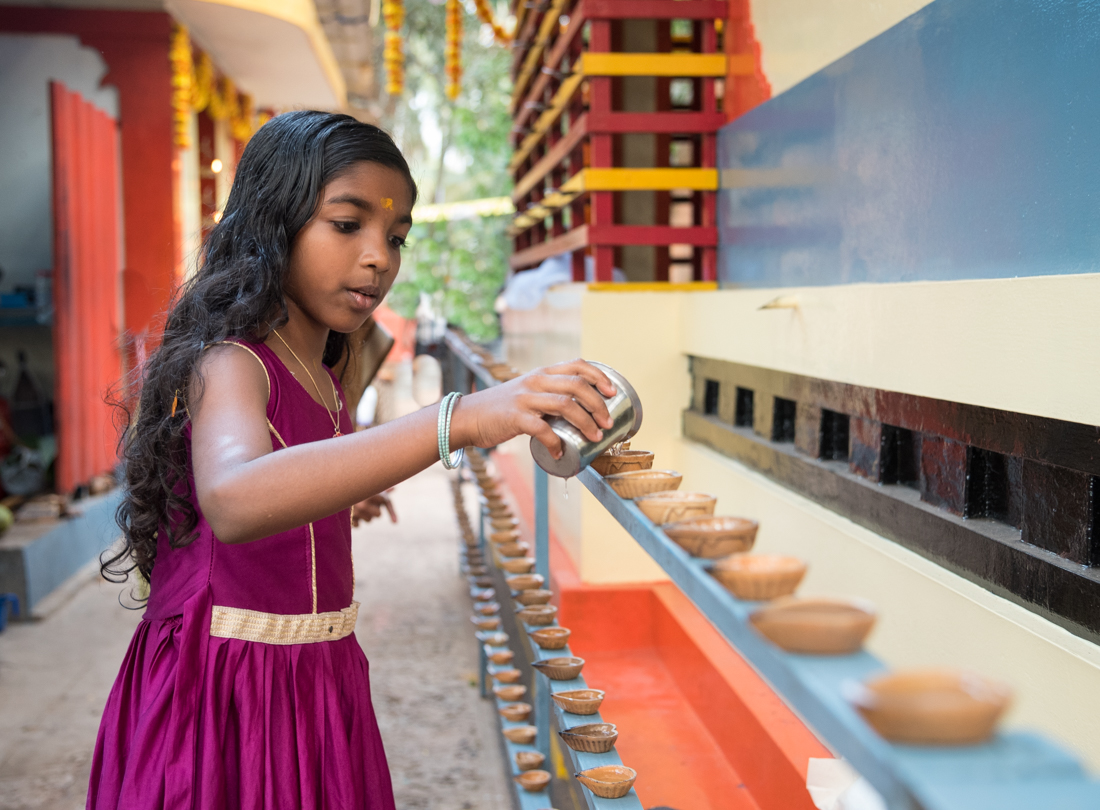
Late afternoon preparations, pouring lamp oil into each little dish. Thousands burned all at once to light up the two tiny temple buildings during the theyyam.
*Here’s a photographers’ note: If I have a consistent photographic ‘style,’ it’s that I often use a very wide angle lens, and/or I shoot from a low (squatting?) or high angle. It dawns on me that maybe I enjoy these pictures because the perspective – and the location of the camera – is more obvious. And what’s often obvious is that the camera (and thus the camera man) is very close to what’s going on. It’s implicit in the image that I’m squatting ( or tip-toeing) 2 feet from the subject – not shooting a telephoto zoom from across the street somewhere. I’m peaking over someone’s shoulder or shooting under someone’s elbow or eye-to-eye with a kid. Or – all too often – about to be trampled. (See below).
